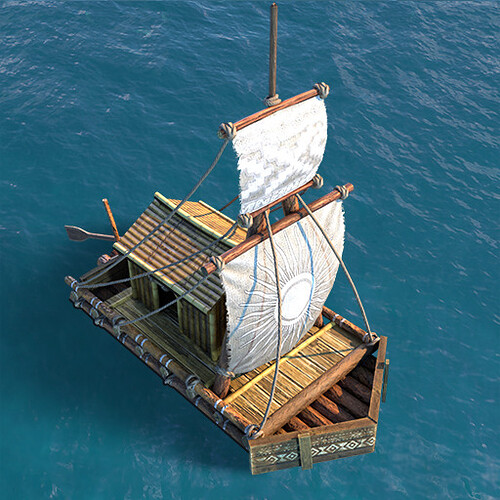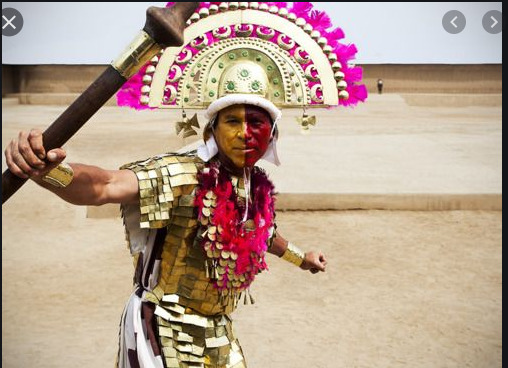First of all, I don’t speak neither English nor Spanish as my native language. So please bear with me if I make any grammar or puctuation mistakes.
This is just a conceptual suggestion, that’s why the thread will only address bonuses, unique units and techs. Specific bonus values and the tech tree can always be tweaked for balance later.
The Chimu
Why the Chimu empire?
-It’s already in-game as part of the inca campaign.
-It’s already in the History feature of the game as part of the inca section.
-After the incas defeated the Chankas, the Chimu became their most prominent rival. And it was the only civilization powerful enough to defeat the inca imperial army in direct confrontation and stop the inca expansion in the continent.
-Chimu was the second largest empire in south America during the Postclassic Period/Late Intermediate Horizon-Late Horizon.
It was the third largest empire in the Americas during the Postclassic Period/Late Intermediate Horizon-Late Horizon (1st Inca empire, 2nd Mexica confederation or Aztec empire).
And it was the fourth greatest empire in all the history of the Americas before the arrival of the Europeans (1st Inca empire, 2nd Wari empire or Tiwanaku-Wari empire, 3rd Mexica confederation or Aztec empire).
-Chimu is unique and has enough personality to be a new civ. It was a coastal empire born from moche people who speak muchik and quingnam; unlike incas who are andean puquina-quechua people who speak quechua.
-The Chimu forged the hardest pre-columbian bronze alloy found to date and were the best metalworkers of the pre-columbian americas.
-The Chimu-Inca rivalry survived even after the arrival of the Spanish. Chimu joined the europeans to defeat the incas in the battle of Ollantaytambo and the siege of Cuzco.
Civ concept: Heavy infantry and naval.
-Fish and huntables contain X% more food.
-Infantry armor upgrades for free.
-Barracks and docks cost -X wood.
-Galleys +1 attack per age (+X total).
Unique units
-
Royal guard: Fast heavy infantry that gains hit points for every kill (+X HP per kill, only stacks Y times).
-
Warrior shaman: Fast monk unit that can’t pick up relics or convert, but can heal 2 friendly units at the same time (First target at 100% rate. Second target at a reduced X% rate) and throw an incendiary ceramic gourd.
Incendiary gourd mechanic: Similar to the mangonel’s attack ground ability. But instead of dealing massive damage, it applies a small damage over time debuff that deals X damage per Y seconds (like poison arrows from AoE3) to enemy units in the area and slow them Z% for the duration. This has no effect on buildings or siege.
Unique techs
- Ayahuasca (Castle age): Skirmishers attack X% faster.
- Bronze armor (Imperial age): Eagle warriors gain +X meele armor.
Team bonus
Markets work X% faster.
Possible wonders:
-Chan Chan (UNESCO World Heritage Site).
-Huaca of the dragon or the rainbow.
Note: This suggestion combines the Moche kingdom and the Chimu empire because both occupied the same area and shared the same ethnicity, culture and language.
Historical background
Just if you are interested in reading it.
About the Chimu empire from Aoe II:
Rather than relying on brute strength or innovative technology, the Inca military outshone its enemies through effective military tactics, particularly rapid coordinated attacks, and by adapting their troops to the different terrains of western South America. Against the Huanca, the Inca used fast military attacks to catch them by surprise and prevent a long and difficult conflict. Against the Chimor Empire, a state which distinguished itself as holding the best metalworkers of Pre-Columbian America (and possibly the best armored troops in the New World prior to European arrival), the Inca used the desert terrain of the region to their advantage, cutting off rivers which fed water to the mighty Chimor capital of Chan-Chan and forcing its surrender.
About the Chimu empire:
Chimor (also Chimu Empire) was the political grouping of the Moche culture that ruled the northern coast of South America. Chimu was the largest kingdom in the Late Intermediate Horizon period, encompassing 1,000-1,300 kilometres (620 mi) of coastline. The Chimu grew out of the remnants of the Moche culture (but opinions are divided between Chimu being the second stage of the Moche kingdom or being a moche grouping that reached the imperial stage a few decades after the fall of the Moche kingdom). Taycanamo founded Chan Chan and conquered nearby villages. His son, Guacri-caur, conquered the lower part of the valley and was succeeded by a son named Nancen-pinco who really laid the foundations of the Kingdom by conquering the head of the valley of Chimor and the neighboring valleys of Sana, Pacasmayo, Chicama, Viru, Chao and Santa. The Chimu kingdom was in constant expansion. They started to move towards the north. The first valleys seem to have joined forces willingly, but the Sican kingdom was acquired through conquest. Soon the Vicus kingdom and the Lambayeque kingdom were defeated and annexed. As a result, Chimu was influenced by the Lambayeque culture. They also were significantly influenced by the Wari culture. Under the emperor Minchancaman, the Chimu empire expanded towards the south, defeating the Yunga kingdoms of Chuquimancu in Runahuanac and Cuismancu in Cañete. The Chimu conquests seemed to be unstoppable; they continued to annex curacazgos and cultures like the Chancay kingdom. Eventually Chimu expanded as far as Carabayllo, where they clashed against the Inca crown prince Topa Inca Yupanqui and his personal army in the battle of Maranga. The battle ended in a draw but the Chimu army was forced to retreat. Before long, the Inca conquest began officially in the 1470s by prince Topa Inca Yupanqui. The Incas were almost defeated in the battle of Paramonga, and they narrowly achieved a draw in the battle of Santa. Months later, the Chimu repelled the Incas again in the battle of Pampa Grande. Topa Inca Yupanqui claimed victory in the battle of Parmunca (Paramonga) and in the battle of Huallmi. Both sides suffered enormous losses. Approximately 6000 soldiers in Parmunca for the Incas, and 10 000 in Huallmi. Topa Inca Yupanqui asked for reinforcements from Pachacuti’s imperial army, and his father sent 20 000 soldiers. The Inca forces defeated the emperor Minchancaman in the siege of Chan Chan. Finally, the Incas gained control over Chimu lands, moved Minchancaman to Cuzco, and redirected gold and silver there to adorn the Coricancha temple. The Incas appointed Chumun-Caur, son of emperor Minchancaman and queen Chanquirguanguan of the Huaura valley, as the king-governor of Chimu, and Pachacuti forced him to marry one of his daughters (Inca princess of panaka status). Chumun-Caur reigned with the support of Querrotumi, one of the generals under Minchancaman, but the military man would later rebel in 1475. Chumun-Caur defeated him and stopped the rebellion, resulting in Querrotumi committing suicide in Cerro Campana.
The greatest surviving ruin of this civilization is the city of Chan Chan, a fortified citadel in the middle of a desert. Now recognized as a World Heritage Site. According to legend, the capital of Chan Chan was founded by Taycanamo, who arrived in the area by sea.
In the continent, Chimu was the only empire that could rival the incas on terms of military prowess, and had any chance of stopping their expansion.
The civilization is also known for its exquisite and intricate metalworking; it was the most advanced of the new world. Chimu also excelled at agricultural infrastructure and ships.
Economy
The Chimu mainly engaged in fishing, hunting, agriculture, and metallurgy. People navigated reed fishing canoes known as Caballitos de totora (Lit. Little totora reed horses), hunted deer and sea lions, and traded using irregular-sized metal tokens. Fishermen and craftsmen were highly valued in the empire. They worked together to extensively produce Caballitos de totora: one-man canoes made of totora reed which produced less water friction than wooden boats. These fast canoes could surf waves and even reach the open sea to fish diverse marine species. Additionally, the Chimu used bigger versions Called caballos de totora (Lit. Totora reed horses) for warfare.
The success of the Chimu was due to their innovative agricultural techniques, despite the desert environment. They built extensive hydraulic systems using canals, which flowed to large valleys forming complex irrigation systems. The Chimu also used Huachaques (sunken farms) that removed the dry top layer of soil to work with the rich and moist soil beneath, Walk-in wells, and large reservoirs to retain the water they gained from their hydraulic systems. These techniques drastically increased productivity of the land. As a coastal civilization located in a desert and affected by El Niño phenomenom (the harsh climate, strong winds and floods), the Chimu developed compost, crop rotation and stockpile techniques similar to modern methods.
The capital Chan Chan was a place of vast trade and craftsmanship in wood, textiles and ceramics. The bureaucratic centre imported many raw materials from across Chimu, and distributed them to over 26,000 craftsmen that lived in Chan Chan. Most of the population in the capital was made up of artisans, the majority of which were cherry picked, and forcibly removed, from surrounding conquered cities. Once an artisan was ‘placed’ they were unable to change their profession, and were grouped according to their area of specialisation. The Chimu applied a special mixture of oils and fire hardening methods to their wooden tools and ritual decorations to make them as resistant as possible; some remain undamaged until today. The craftsmen used cedar (Cedrela herrerae), american carob (Prosopis pallida), capuli cherry tree (Physalis peruviana), and black cherry tree (Prunus serotina) obtained from trade.
Trade:
The Chimu’s economic and social system operated through the import of raw materials, where they were processed into prestige goods by artisans at Chan Chan. The elite at Chan Chan made the decisions on most other matters concerning organization, monopolizing production, storage of food and products, and distribution or consumption of goods. Their trade system was so large that it connected South America and the southern part of Noth America indirectly. Some of the most important imported goods are Spondylus shellfish from the North of present-day Ecuador and Panama, terra preta from the amazon and other regions of present-day Peru and Colombia, and wood and tree seeds from the south of present-day America.
Metallurgy and blacksmithing
Unlike other occupations specialized in crafting wood or ceramics, the Chimu considered metalworking as a sacred job dictated by their moon god Siwa (sometimes called Si or Shi). Blacksmiths and artisans were picked from all over the empire and had to go through strict tests every year. The selected few who passed the trials were ordered to live in mine camps and work there. The chimu believed that spending most of one’s time in the workplace would increase the quality of the products. In this respect, they viewed mining as the initial stage of metalworking. Some Chimu artisans worked in metal workshops divided into sections for each specialized treatment of metals: plating, gold, stamping, lost-wax, pearl, the watermark, and embossing wooden molds. These techniques produced large variety of objects, such as cups, knives, containers, figurines, bracelets, pins, and crowns. They used arsenic to harden the metals after they were cast. Large-scale smelting took place in a cluster of workshops at Cerro de los Cemetarios. The Chimu also produced full body bronze armor, waning crescent moon helmets, and golden octopus or owl masks for combat. Bronze alloys used in equipment could achieve between 28.8 and 31.7 HRC. The hardest bronze of the pre-columbian era found to date is of Chimu origin.
Religion
The moon god Siwa, also referred as Si or Shi, was the greatest divinity. Si was the god of tides, fishing, agriculture, pregnancy, blacksmiths, time, and war. Unlike most moon deities around the world, the Chimu moon deity was both male and female. In its female avatar, Si was called Quillapa Huillac and could take the form of rainbows, seagulls and pelicans. In its male avatar, Si could transform into a giant octopus or a giant man with an octopus head and feline fangs. It was believed to be more powerful than the Sun, as it appeared by night and day, and it also controlled the weather and growth of crops. Devotees sacrificed animals and birds to the Moon, as well as their own children on piles of colored cottons with offerings of fruit and chicha. They believed the sacrificed children would become deified and they were usually sacrificed around age five.
Human sacrifices where divided into pure sacrifices and supreme sacrifices. The first ones were voluntary sacrifices of children. In 2011, archaeologists uncovered human and animal skeletons in the village of Huanchaco. After years of excavation, they identified more than 140 human (and more than 200 llama) skeletons from children between the ages of 6 and 15, all of whom had deep slashes across the sternum and broken rib cages indicating that their hearts may have been removed. On the other hand, supreme sacrifices were skilled enemy soldiers who could exhibit superb abilities on the battlefield. These prisoners of war were taken to Chan Chan by sea, as if they were being paraded in front of the sea itself in totora horse ships. Warrior shamans selected those who were worthy, marked them with fish blood and tied them up to totora reed ships. The smell would attract seagulls and pelicans which were the avatars of the moon god. The notorious contrast between these two types of human sacrifices and the involvement of warrior shamans on the battlefield suggest Chimu religion started as a pacific cult, then adopted sacrifices of the innocent like neighboring practices, and ended up as a violent religion influenced by the imperialist agenda of aristocratic clergy and nobility.
Warrior shamans had to be present on the battlefield to certify the strength of the enemies and choose the proper sacrifices. They weren’t allowed to kill, so they wielded maces to knock out sacrificial candidates and threw incendiary ceramic gourds filled with resin and oils to burn and disperse enemies. Warrior shamans wore broze armor, their helmets fashioned an inverted moon that represented the waning crescent, masks depicted an owl face, and had owl wings on their backs. Owls were considered the embodiments of death, the night and the occult.
The Chimu also worshipped Mars (Nor) and Earth (Ghisa) deities, as well as the Sun (Jiang) and the Sea (Ni) deities. Jiang was associated with stones called alaec-pong (cacique stone), which were believed to be ancestors of the people in whose area they stood and sons of the Sun.
Warfare
A frequent Chimu strategy was to pincer attack by land and sea at the same time. Chimu soldiers advanced in decimal formations, with Chimu macemen in the front lines, while spearmen and archers riding totora horse ships attacked the coast burning down buildings. Another common tactic was massive disembarkment. This tactic entailed careful coordination to disembark large troops as fast as possible. Sometimes these troops were very extended across the shore and so allowed the Chimu to surround cities or take over key locations.
The army was organized in a decimal system of 10, 100, 1000 and 10 000. Each group was led by a commander. The ranks were structured along meritocratic factors and achievements. Low ranked soldiers were distinguished from high ranked ones thanks to their equipment. New recruits wore low quality armor, moon helmet and were allowed to carry bronze si-moixquic (Moon soul or moon knife in muchik). Experienced soldiers could own more equipment, wear bronze armor and weapons, and bronze masks. Generals and commanders from nobility were allowed to wear full body bronze armor and masks. The strongest veteran commanders and generals had the opportunity of being promoted to royal guards and wield two rectangular bronze shields attached together to a spear as a weapon of status. Their primary role was to protect the royal family and the emperor. During military campaigns, royal guards followed the emperor to the battlefield and formed the elite force of the Chimu empire.
A couple of warrior shaman squads usually stayed behind and defended the rear. They applied first aid to injured soldiers and covered wounds with huaripuri (Valeriana coarctasta) leaves. Ayahuasca leaves were also provided to fight off fatigue. Ayahuasca is famous for being a psychoactive brew. This drink was named after one of its ingredients: the ayahuasca plant (Banisteriopsis caapi). When ayahuasca is brewed with fully dried chacruna (Psychotria viridis) or cabrerana (Diplopterys cabrerana), the resulting beverage produces hallucinations. However, when small ayahuasca leaves are chewed alongside even smaller semi-dried chacruna leaves, the bolus just increases mental alertness and reduces fatigue. Chewing in high doses or for a long time can cause headaches, agitation, irregular heartbeats, chest pain and mild frenzy.
Society
The Chimu society revolved around the Si-an (Moon house), temples that served as birthing centers. The difficulties of living in a desert and constant wars caused the Chimu society to value childbirth in the highest regard. Children and babies were viewed as sacred and pure; the main reasons behind children sacrifices. Abortion, killings and crimes against minors were punished with the degradation of social status and perpetual slavery. The Chimu also strongly promoted coitus and other forms of sexual intercourse. Free sexual activities were perceived as the norm for the Chimu; a social behavior probably inherited from their moche culture. These practices caused the Chimu population to be one of the largest in the new world; Chan Chan city alone was the home of more than 30 000 habitants.
The Chimu empire hierarchy:
-Cie-quich: It means emperor (lit. Great-Lord) in the muchik language. The emperor was the supreme authority with complete control over politic, religious and military affairs. He resided in the capital Chan Chan. The incas translated the title as Chimu Capac (lit. Great Chimu) in quechua.
-Quich: It means lord or governor in muchik. These curacas were members of the royal family or high nobility. They owned land and acted as local kings to control subjugated kingdoms.
-The upper middle class: Clergy and metalworkers. They owned land and possessed privileges.
-The middle class: Fishermen, farmers, craftsmen and merchants.
-The lower class: Servants of the Cie-quich and Quich.
-The bottom class: Slaves and criminals.
Important figures
-Tacaynamo (?-?): The founder of Chan Chan and the first king of Chimu. His name means “He who comes from the other side of the sea”.
-Guacri-Caur (?-?): Second king of Chimu, and son of Tacaynamo. Chronicles (1604) describe him as “He wielded more power than his father, subjugated indians of this Chimor valley”.
-Naucempinco (?-1370 or 1380 aprox): Third king of Chimu, son of Guacri-Caur. According to Spanish chronicles: “He was the conqueror of this valley towards the mountains. Likewise, he advanced south following the coast up to a town called Mayao, where today lies the town of Santa in eighteen leagues from this city”. “From the Chicama valley to Pacasmayo, next to Saña town, in twenty-four leagues from that city”.
-Minchancaman (XV century-1476): Tenth king of Chimu, and third emperor of the Chimu empire. His name means “Great-Conqueror”. He ruled the empire from Ecuador to Carabayllo, and fought against the Incas in a war for supremacy. He surrendered and was moved to Cuzco to become a high noble. Minchancaman was disliked by the Inca nobility and royal panakas because he was too arrogant and prideful. Years later, he was assassinated by Inca nobles.
-Chumun-Caur (?-?): Eleventh king of Chimu and the first one under Inca rule. He was the son of emperor Minchancaman and queen Chanquirguanguan of the Huaura valley. He was forced to marry an Inca princess, and stopped rebellions in his kingdom.
-Querrotumi (?-1475): Royal guard and general under Minchancaman. He had the coregency of Chimu during the reign of Chumun-Caur. He rebelled against the Chimu and the Incas, but was defeated and committed suicide.
-Guaman-Chumu (?-?): Twelfth king of Chimu and the second under Inca rule. He was the son of Guaman-Caur. During his reign, the Spanish arrived in South America. He tried to protect the Chimu traditions that were being replaced by Incan ones; so he attempted a rebellion but stopped when he got news of the arrival of the Spanish. His children were Ancocoyuch, Caja Cimcim, Calli y Chambinamo.
-Ancocoyuch (?-?): Thirteenth king of Chimu and the third under Inca rule. According to Spanish chronicles, he died in the Inca war of succession between Atahualpa and Huascar.
-Caja-Cimcim (?-?): Fourteenth king of Chimu, the fourth under Inca rule, and the first one under Spanish rule. His christian name was Martín Caja-Cimcim. He helped the Spanish in the war against the Incas and joined them in the siege of Cuzco and the battle of Ollantaytambo. After the Spanish victory, he was baptized, received a christian name and his cie-quich title was recognized as a valid nobility title by the Spanish crown in both muchik and quechua languages (Chimu capac).
Languages:
Muchik and Quingnam.
Possible campaigns:
-The rise of Chimu and the conquest of the north of South America.
-The Chimu-Inca war from the Chimu perspective.
-Chimu joining the Spanish, the Cañaris, the Chachapoyas and the Wankas to defeat the Inca empire.
Source
Thanks to google translate
-Calancha, Antonio de la. “Crónica moralizada del Orden de San Agustín en el Perú: con sucesos ejemplares en esta monarquía. Libro III”, Barcelona: Pedro Lacavalleria, 1638.
-Coe M. - Snow, D.-Benson E. (eds.) Atlas of Ancient America, Oxford, 1990.
-Chacot de Girart, R., La luna y sus personificacion ornitomorfa en el arte chimu’, Actas del XXVII Congreso Internacional de Americanistas, Lima, 1939.
-Guigoni, A., “La religione lunare dei Chimú”, Arkete, I, 2, 1999, pp. 97-108.
-Guigoni, A., “Moche, una civiltà andina del periodo classico”, Tepee, No. 24, 1999, pp. 53-58.
-Burger, R.L., “The Moche Sources of Archaism in Chimu Ceramics”, Nawpa Pacha, No.14, Berkeley, California, 1976.
-Lothrop, S.K., Peruvian metallurgy, Acta of XXIX Congress international of Americanists. New York, 1949.
-Park, Yumi. Mirrors of Clay: Reflections of Ancient Andean Life in Ceramics from the Sam Olden Collection. Jackson, MS, 2012.
-Moseley, M.E. –Lechtmann, H., “The Scoria at Chan Chan: non Metallurgical Deposit”, Nawpa Pacha No.10-12, Berkeley, 1972-74.
-Moseley, M.E -Cordy Collins, A., Northern Dinasties. Kinship and Statecraft in Chimor, Washington, 1990.
-Rostworowski de Díez Canseco, María. “Recursos Naturales Renovables y Pesca, Siglos XVI y XVII: Curacas y Sucesiones, Costa Norte”. Lima: Instituto de Estudios Peruanos, 2005.
-Rowe, J. H. The Kingdom of Chimor, Acta Americana, vols. No.1-2, New York, 1949.
-Chan Chan Archaeological Zone - UNESCO World Heritage Centre
-Comentarios reales que tratan del orígen de los Incas, reyes que fueron del ... - Garcilaso de la Vega - Google Libros
And many web pages.

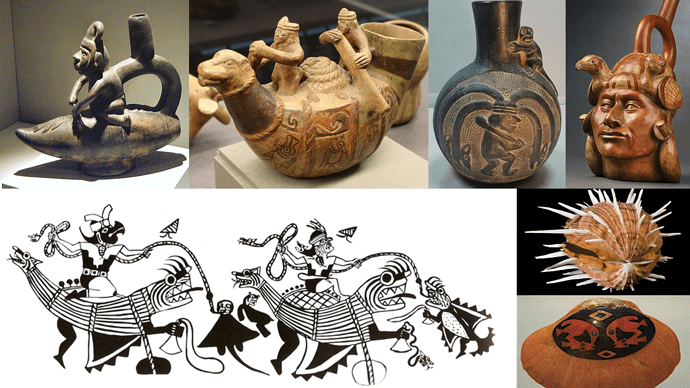
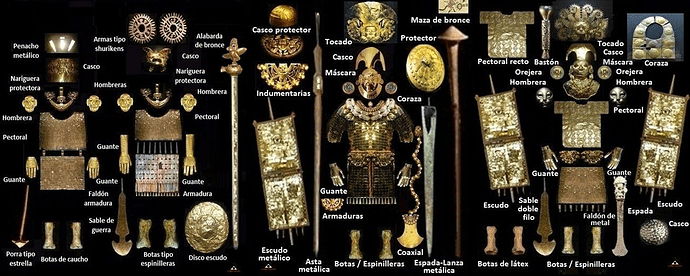


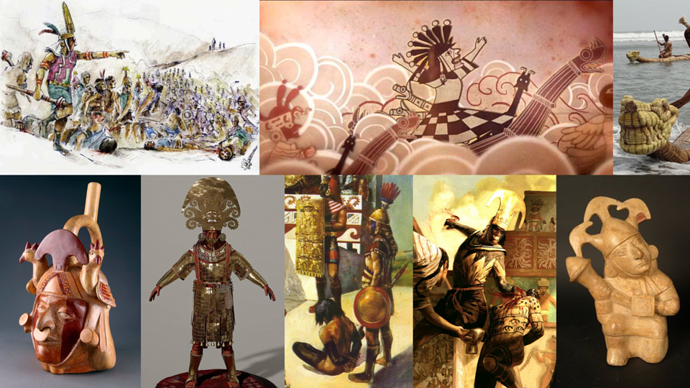

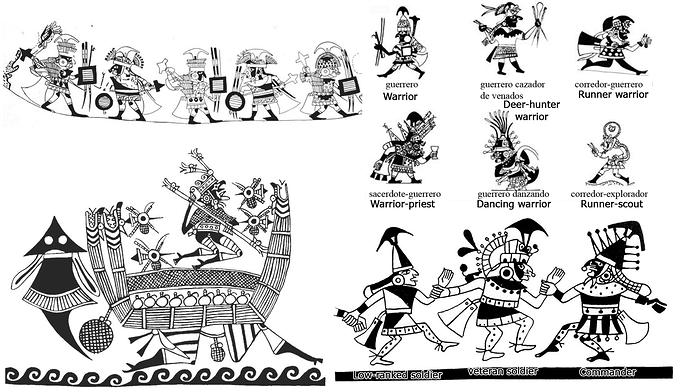
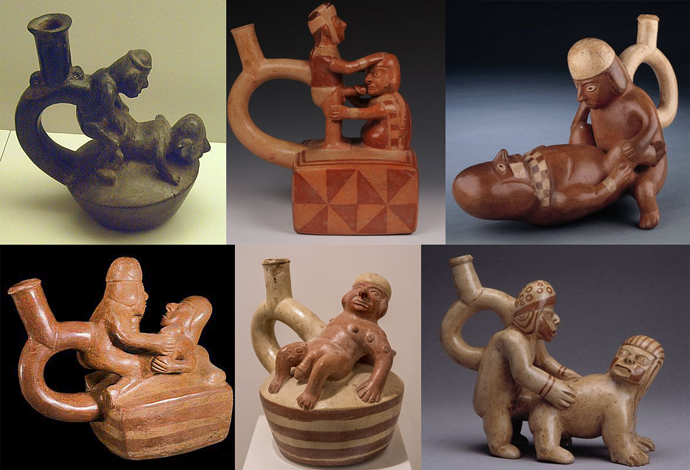
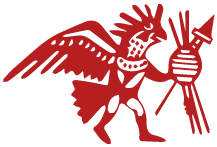
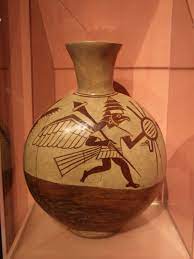
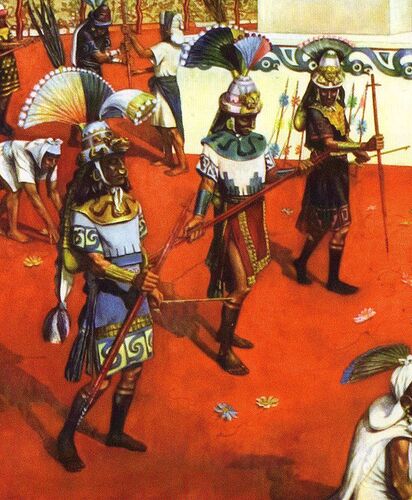

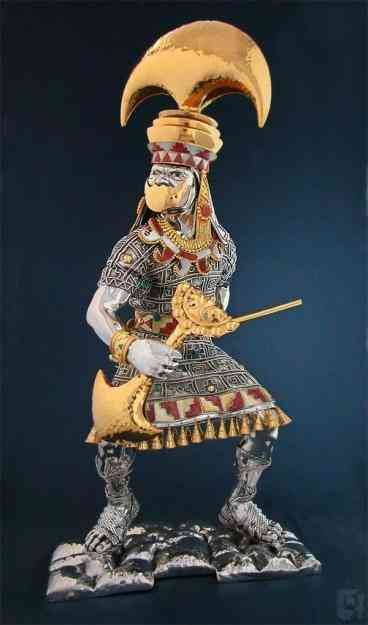
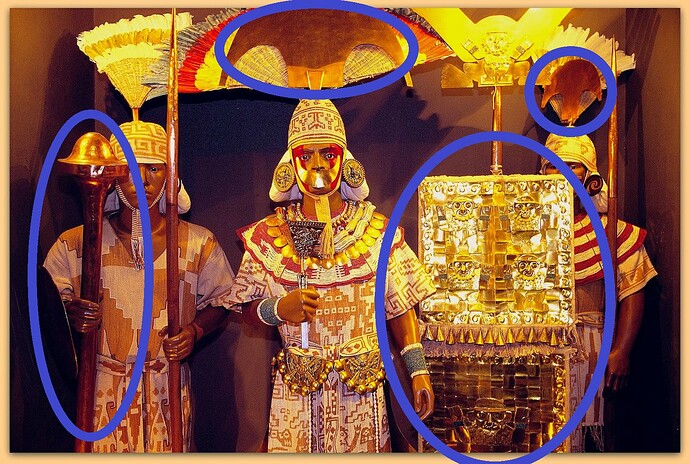
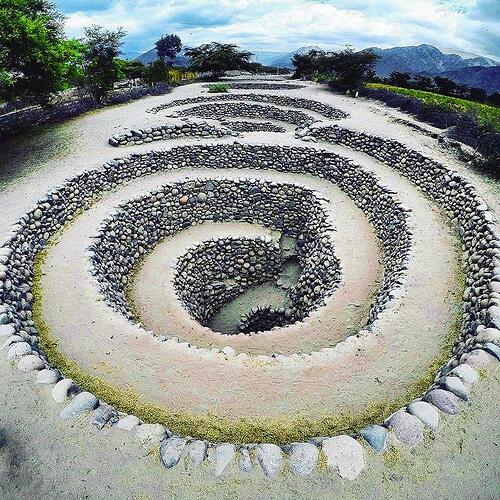
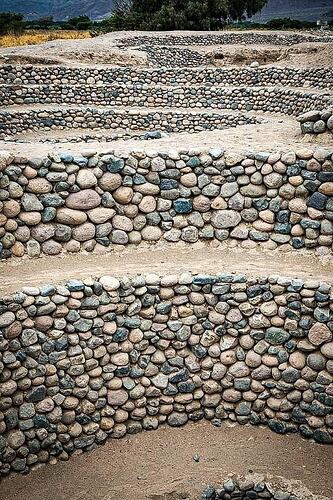
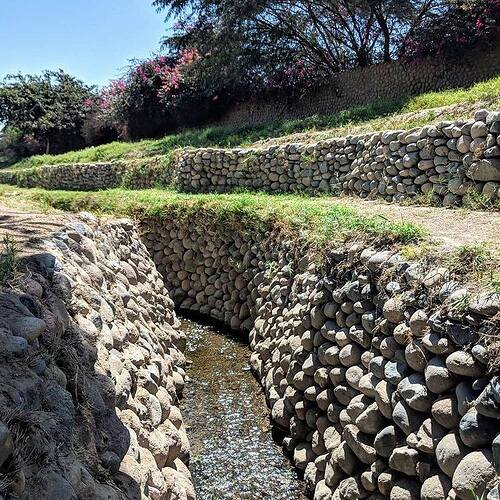

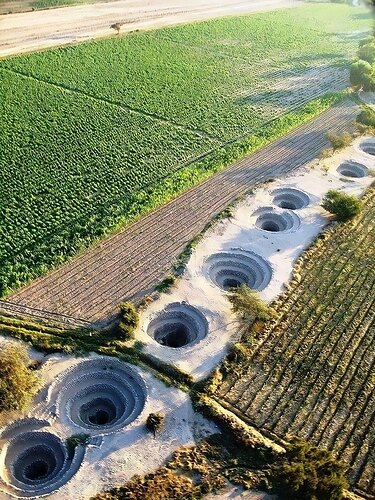
 for Historical suggestion(s).
for Historical suggestion(s).